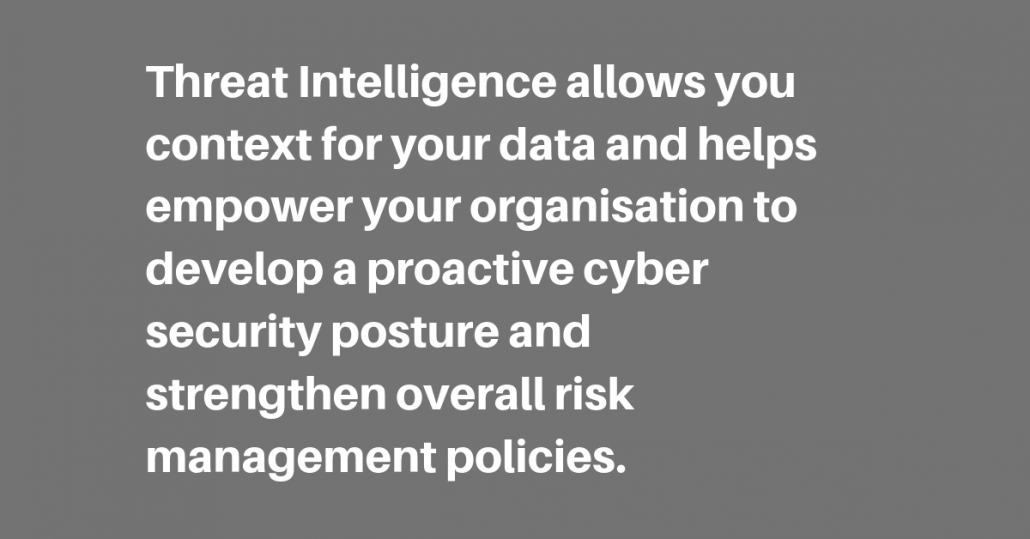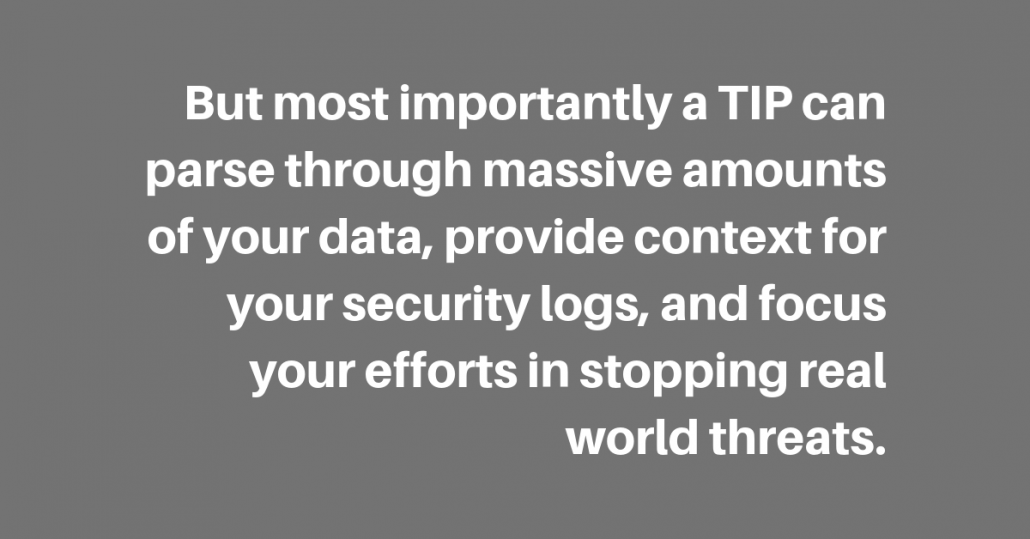Threat Intelligence Platforms 101

By Alex Duffy, Security Solutions Architect, emt Distribution
 Threat Intelligence is quickly becoming one of the most powerful ideas in our current IT security landscape. Threat Intelligence allows you context for your data and helps empower your organisation to develop a proactive cyber security posture and strengthen overall risk management policies. It also helps security teams make more informed decisions during and in the aftermath of cyber-attacks.
Threat Intelligence is quickly becoming one of the most powerful ideas in our current IT security landscape. Threat Intelligence allows you context for your data and helps empower your organisation to develop a proactive cyber security posture and strengthen overall risk management policies. It also helps security teams make more informed decisions during and in the aftermath of cyber-attacks.
So, you may already have a plethora of security products in place like Firewalls, Proxys and endpoint security, but are you able to see the big picture? With all of these security products logging back to your Security Information and Event Management (SIEM) it can come across as just noise. How can you evaluate if that IP address or domain is important to you?
Your trusty SIEM is collecting data, but do you know what it’s collecting or how important it is? Maybe, you may have the SIEM using a lookup list so when it detects a bad IP it will alert you. Great, that’s a good start, but WHY is it a bad IP? Is it part of a larger attack? Is it just the beginning stages in the cyber kill chain? This is where context becomes key, linking into why Threat Intelligence is critical.
Rudimentary threat Intelligence can be achieved manually. An example being identifying an IP address you want to find out more information from, and then using the internet and your security sources to build a picture around it. But what if you want more comprehensive analytics, then you will need automation, which brings me onto my next point;
What is a Threat Intelligence Platform (TIP) and why do you need one?
 The human element is the slow part in threat intelligence. The human brain, although magnificent can often not compete with the ease and functionality of an automated system. Besides, why waste your Security Analyst’s precious hours when you can have half the cumbersome work done for you. Threat Intelligence Platforms (TIP) allow you to pass off key information like IPs and URLs that are important to you and build context on them using a large number of open source threat feeds and open source blocklists. A TIP becomes your single pane of glass to the security of your organisation. For example, you have seen a URL come through the proxy, and you have identified through the TIP that it is related to a malware campaign that re-uses their infrastructure and domain names for the command and control (C2) portion of their attack. By using this information, you now know that a device in your network is infected and you can begin the process to clean it up. TIPs make
The human element is the slow part in threat intelligence. The human brain, although magnificent can often not compete with the ease and functionality of an automated system. Besides, why waste your Security Analyst’s precious hours when you can have half the cumbersome work done for you. Threat Intelligence Platforms (TIP) allow you to pass off key information like IPs and URLs that are important to you and build context on them using a large number of open source threat feeds and open source blocklists. A TIP becomes your single pane of glass to the security of your organisation. For example, you have seen a URL come through the proxy, and you have identified through the TIP that it is related to a malware campaign that re-uses their infrastructure and domain names for the command and control (C2) portion of their attack. By using this information, you now know that a device in your network is infected and you can begin the process to clean it up. TIPs make
Great, you now have a TIP, so what are your next steps? Automation. This will allow you to leverage the TIP to help make better informed decisions and then take action. In the above example I said that we saw a C2 URL in the proxy, and by using the TIP we have determined that it is malicious. Following this, and using automation, we can block said URL, either with or without human interaction.
But most importantly a TIP can parse through massive amounts of your data, provide context for your security logs, and focus your efforts in stopping real world threats. Last but not the least, A TIP optimises response time and improves remediation, and reports strategic, operational and tactical intelligence to stakeholders.
This all sounds cool right? Learn more about Threat Intelligence at our live webinar on April 17th. This interactive webinar is perfect for a security professional who wants to quickly identify real threats to their organisation, even if they don’t have the budget to build out a dedicated threat intelligence team.Register Here
